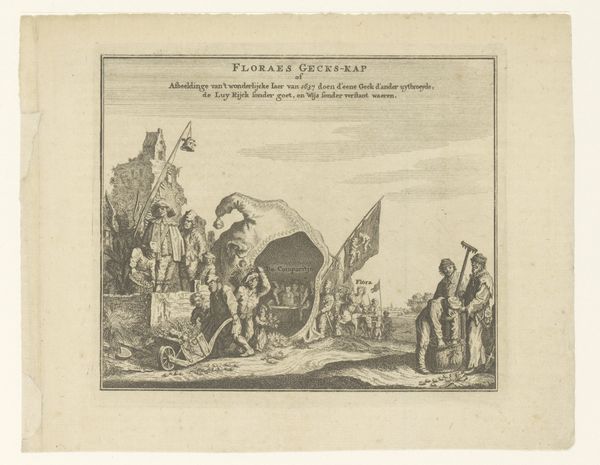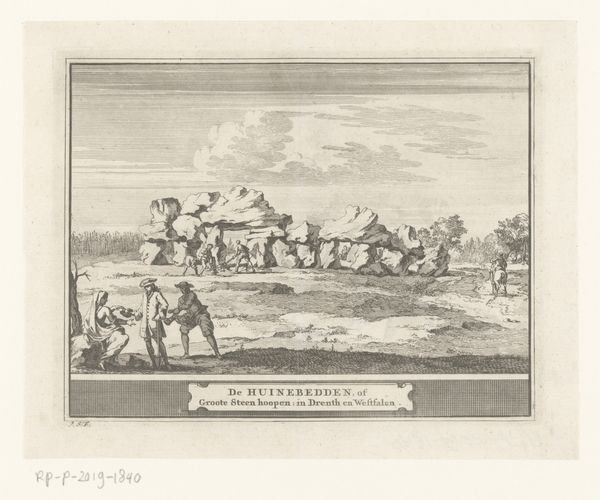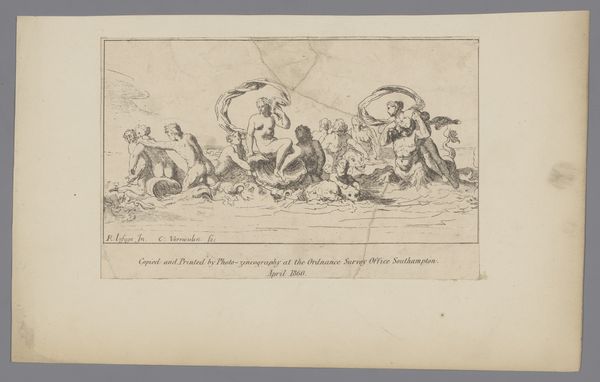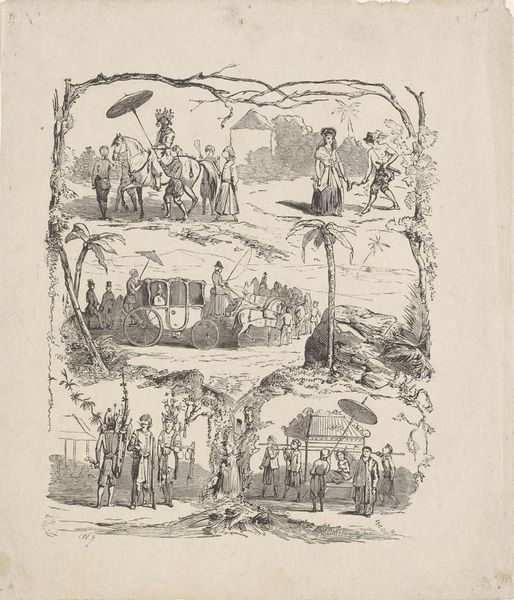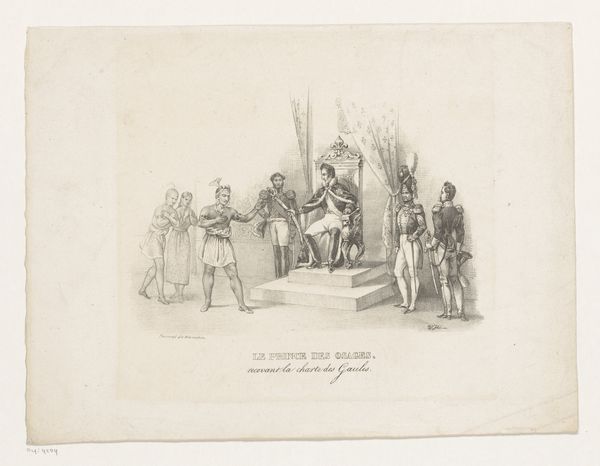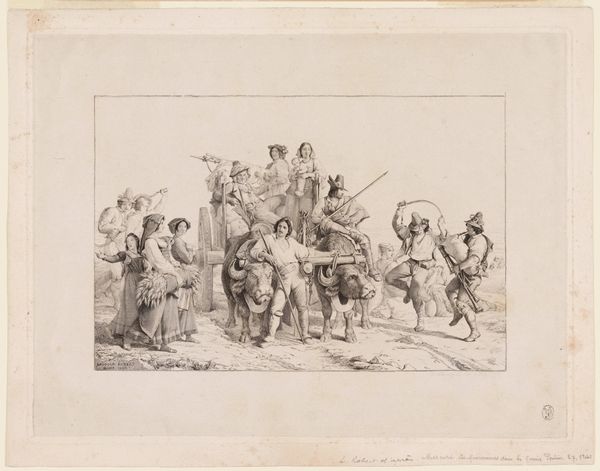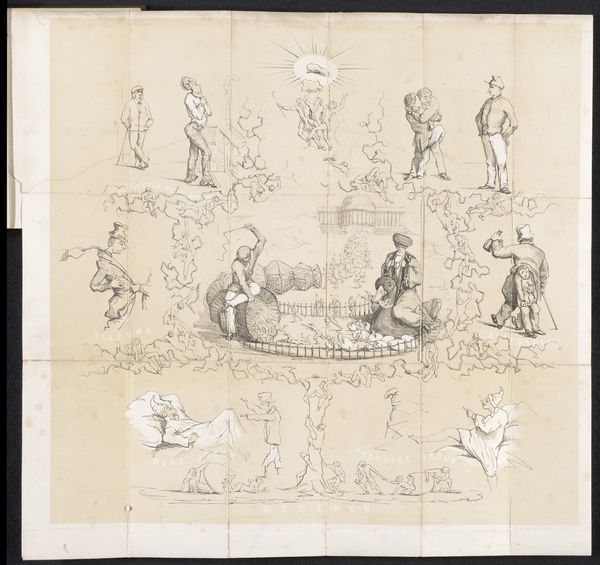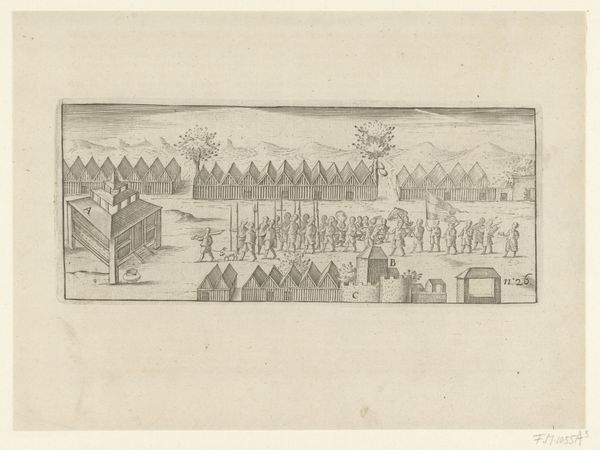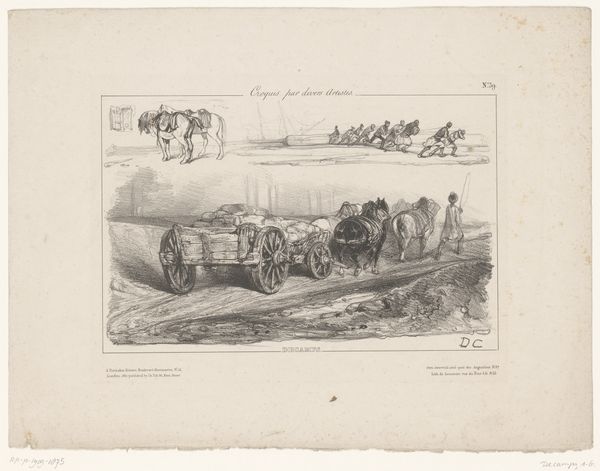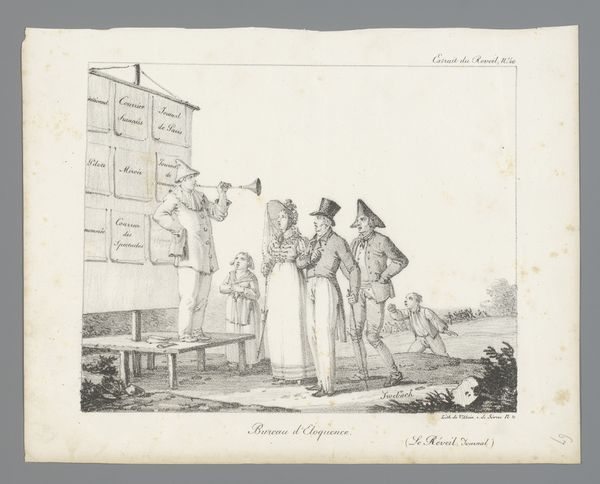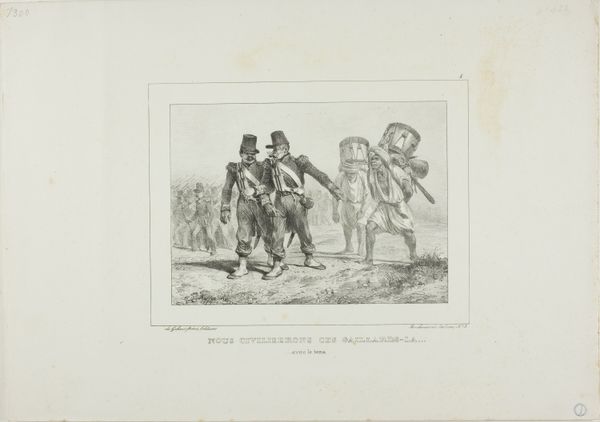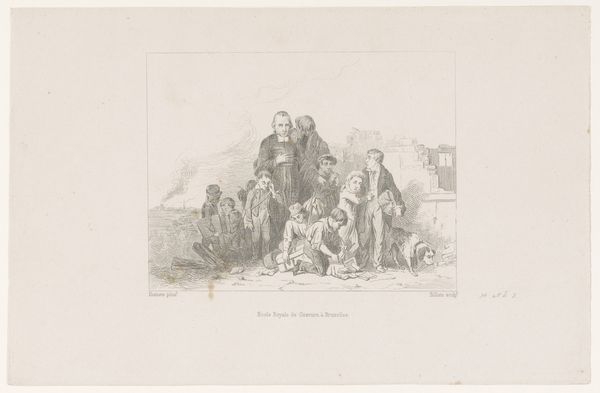
drawing, print, engraving
#
drawing
#
narrative-art
# print
#
line
#
engraving
Dimensions: 210 mm (height) x 320 mm (width) (plademaal)
Editor: So this is "Menneskealdrene," or "The Ages of Man," an engraving done sometime between 1834 and 1866. I'm struck by how it tries to capture an entire lifespan in a single image. What do you see in this piece, from a cultural perspective? Curator: What I find most compelling is how it reflects 19th-century anxieties surrounding masculinity and societal expectations. Notice how the figures are predominantly male, each rigidly defined by his age and prescribed role? The ascent, visually represented as steps, emphasizes a specific kind of progress, tied to labor and social standing. Editor: The stages seem very... linear. From boyhood to established manhood, then decline. Is it romanticizing that concept of societal "progress," though? Curator: Exactly! It subtly enforces a specific, almost patriarchal narrative. Where is the space for other identities, for diverse experiences of aging? It's also ignoring gender entirely! Who defines these stages? Whose "age" counts as valuable? The journey down the hill toward decrepitude, and the imagery of the journey, only further enforces those issues. Editor: I never thought of it that way. The lack of diverse stories within what appears as an otherwise neutral piece really speaks volumes about what that says of 19th-century societal norms. I didn't initially think about who wasn't being represented. Curator: And that’s precisely what’s so vital when engaging with historical artworks. To critically examine the unspoken narratives, the power dynamics embedded within the visual language. Only then can we begin to understand art's role in shaping and reflecting our own perspectives.
Comments
No comments
Be the first to comment and join the conversation on the ultimate creative platform.
